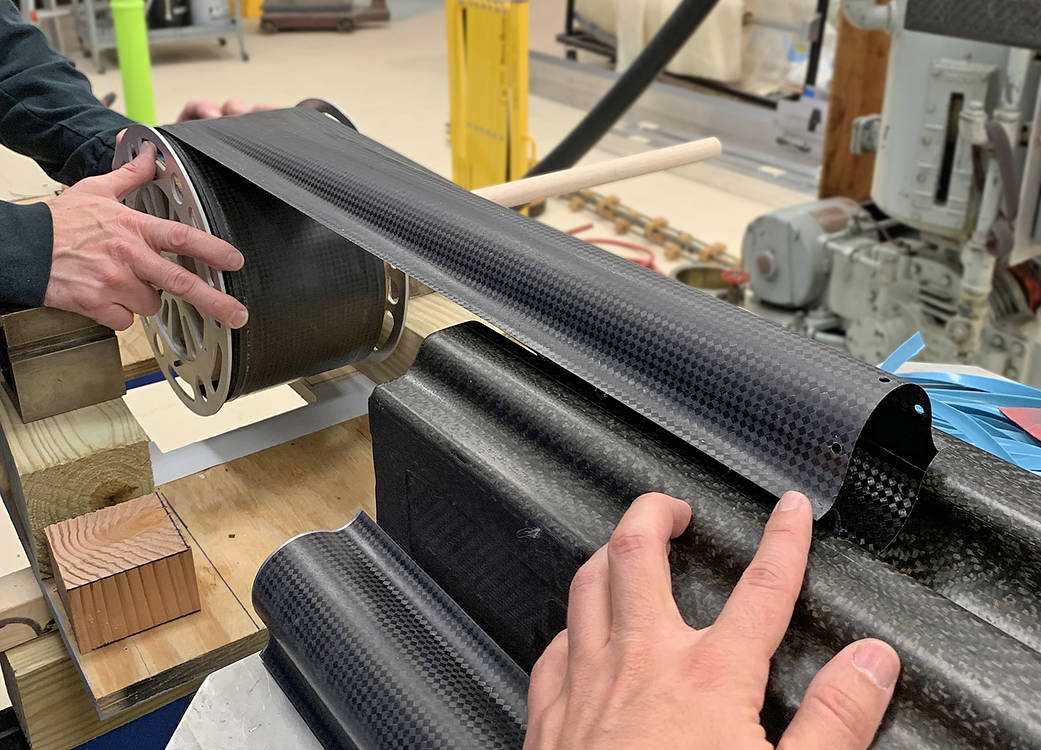
NASA’s Deployable Composite Booms (DCB) project is developing extremely lightweight flexible materials to support small satellite systems, such as solar arrays, antennas, drag sails, solar sails, and more for future Artemis missions.
Small satellites, including CubeSats, are great candidates for carrying deployable antennas, radiators, and high-power solar arrays. To support these kinds of systems on small satellites, the DCB project developed 54.5-foot-long composite support structures that can be folded or rolled up for launch and then self-deployed in space. The tubular “booms,” or masts, are 75% lighter than traditional metallic booms and specially designed to maintain their shape and strength when they are rolled up on a spool.
Before launching a mission into space, these thin-ply composite booms will be flattened and rolled onto spools for compact stowage within the spacecraft. This compact design could enable engineers to significantly increase the size of solar sails on small satellite platforms, which could more than triple the propulsion performance of current solar sail structures for small satellites.
The German Aerospace Center (DLR) is developing the mechanism that will store and deploy these composite booms and is performing structural testing of the booms. DCB technology is currently being infused into a small solar sail system – called the Advanced Composites Solar Sail System (ACS3) – for flight testing in low-Earth orbit. These composite booms could be used to support future deep space small satellite missions, self-erectable communications antennae, or multi-payload scientific towers on the Moon.
By Hillary SmithNASA’s Game Changing Development Program


























